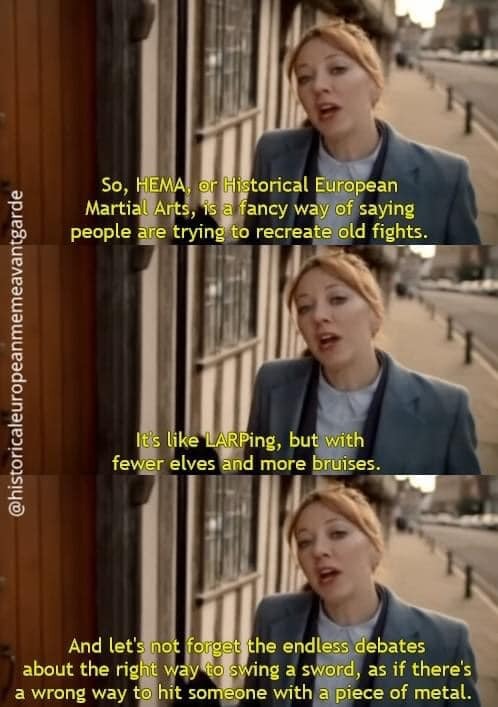#European Sword
Explore tagged Tumblr posts
Text
instagram
BEST Short Sword I've EVER held! LE Messer Initial Impressions
#Kult of Athena#KultOfAthena#sellsword.arts#instagram#videos#Landsknecht Emporium#Adorian Messer#Adorian Messer with Halftan Leather Sheath#Adorian#Messer#sword#swords#weapon#weapons#blade#blades#European Blade#European Blades#European Sword#European Swords#European Weapon#European Weapons#Medieval Sword#Medieval Swords#Medieval Weapon#Medieval Weapons#Renaissance Sword#Renaissance Swords#Renaissance Weapon#6150 High Carbon Steel
3 notes
·
View notes
Text

Proud Roland did at length sound his horn (The Song of Roland)
#song of roland#roland#roncevaux pass#roncevaux#roncesvalles#franks#frankish#germanic#french#france#medieval#middle ages#art#europe#european#chivalric romance#chivalry#knight#paladin#knights#christian#horn#olifant#ivory horn#durendal#sword#spain#pyrenees#iberian peninsula#oliphant
1K notes
·
View notes
Text




A beautiful black and gilt Cup-hilt Rapier,
OaL: 44.6 in/113.3 cm
Blade Length: 36.8 in/93.5 cm
Width: 11.1 in/28.3 cm
Depth: 5 in/12.7 cm
Weight: 2.1 lbs/963.9 g
Italy, ca. 1650, housed at the Metropolitan Museum of Art.
#weapons#sword#cuphilt#rapier#europe#european#italy#italian#early modern#themet#metmuseum#art#history
790 notes
·
View notes
Text
The sword of the day is the stiletto.
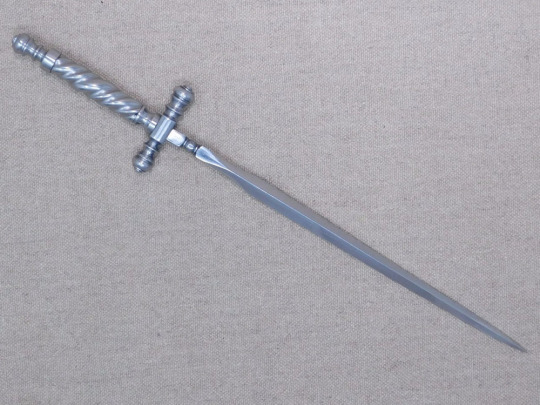
The stiletto is an Italian renaissance-era dagger with a long, slender profile and a needle-like point. It is a development on the rondel dagger, and initially served a very similar purpose; a backup weapon to pierce through gaps in armor while in extremely close quarters combat. It was also developed from a second weapon, called a misericorde, used to deliver mercy kills to downed knights through their heavy armor. The narrow blade could penetrate through chain mail at the armpit to reach the heart, or even stab through the eye slits of a helmet to kill quickly via brain injury. Later, the stiletto was adopted as an assassin’s weapon, easily concealed and able to pierce through heavy leather and fabric clothing. The strikingly narrow blade is so iconic that it remains a name for many different kinds of long, narrow features, like extremely thin high heeled shoes.
3K notes
·
View notes
Text


Hand-and-a-Half Sword, European, possibly British, 15th Century
From the Met Museum
540 notes
·
View notes
Text
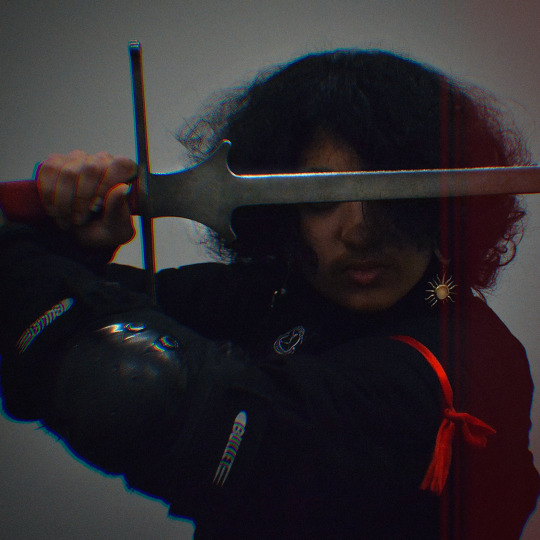
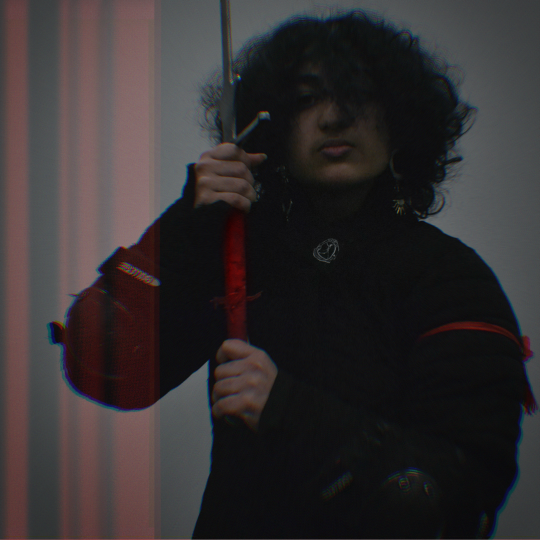

(There’s been some confusion, I’m a real fencer, not a cosplayer 😭😭)
My friend and I took some amazing and edgy glamour shots of me in steel fencing kit holding a steel sword yesterday, I’ve just been playing about with them.
The red band around my arm would signify who I am in the tournament (You’re either Red Fencer or Blue Fencer, they don’t call out your name during a fight), and well, my best friend’s steel jacket is already blue so that makes me Red Fencer. And fits with my Jupiter persona—
They’re very album-image-esque. Me, getting into music? No wayyyyyyhhhhh unlesss (I don’t just foreshadow nothing!) (Don’t worry I have a musical background + bits of musical theatre too, I promise I’m not a YouTuber who just decides they’re a singer 😭😭😭) For fun, anyway.
Side note: Not all the guards I did in those shots are real fencing guards, sometimes we just wanted a good shot.
Credit for for original shots: @ashrimpyshrimp
#elmushterri#red fencer#hema fencer#hema#wma#fencer#fencing#historical European martial arts#steel sword#longsword#women with swords#women in fencing#swordswoman#swords#knight#photography#art
282 notes
·
View notes
Text

impaled mystique 🩸🥀🍄
✶
#artists on tumblr#art#digital art#doodle#artwork#digital drawing#digital illustration#my art#digital painting#medieval dragon#dragon art#fantasy creatures#creature art#dragon design#dragon#13th century#12th century#medieval art#medieval#middle ages#illustrators on tumblr#spear#sword#heraldry#european dragon#classic dragon#tw blood#beast#western dragon#illustration
290 notes
·
View notes
Text
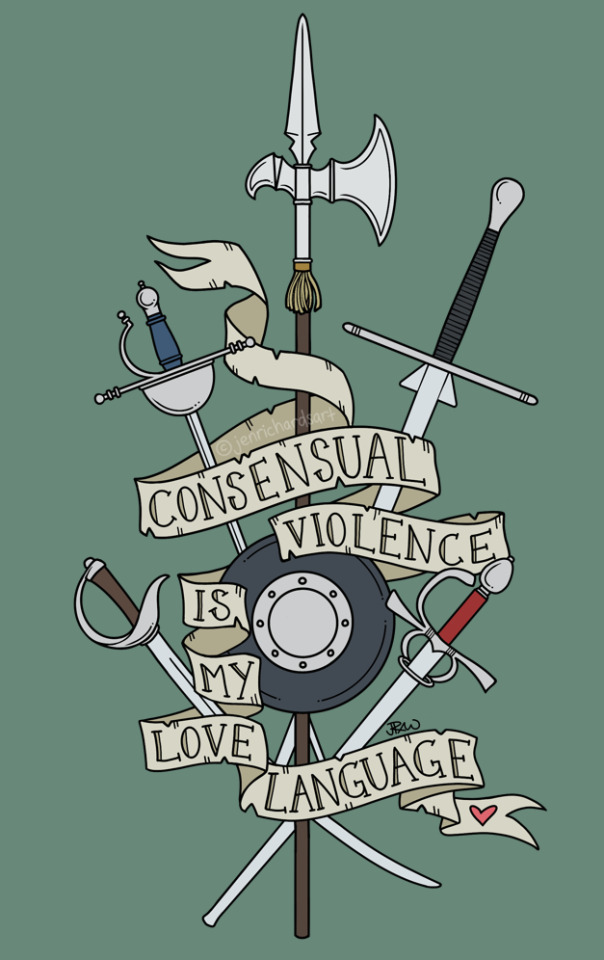
Another one for the HEMA folks, or SCA or LARP or other collections of capital letters! It is available here if you are inclined to wear clothes or stick things on other things
If my clubmates would stop saying banger things like this I would be able to stop drawing piles of weapons and twisty banners. But for now it's a pretty fun challenge for my art so I'll allow it
#my art#hema#historical european martial arts#sca#larp#swords#longsword#rapier#halberd#sword and buckler#sabre#saber#smallsword#sidesword#love language#historical fencing#swordfighting
1K notes
·
View notes
Text

Henryk Hektor Siemiradzki (Polish, 1843-1902) Dance among swords, Detail, 1881 Tretyakov Gallery, Moscow
#one of my favourite artists#Dance among swords#1881#1887#Polish#Polish art#Poland#art#fine art#european art#classical art#europe#european#fine arts#oil painting#europa#mediterranean#mediterraneo
153 notes
·
View notes
Text
sword misconceptions pt 1: longsword
Post series: shortsword | rapier | buckler | dagger | spear
so as I'm getting back into fantasy lit as a historical fencer, there are a lot of things I am noticing cropping up in swordfights that are inaccurate or flat out wrong. So i wanted to write a post for my fellow writers putting down a few things I've learned in 2.5 years of swinging the actual weapons around!
Disclaimer: i am not an expert. Additionally, many of the historical terms for weapons were not standardized (there was no "one" longsword/rapier/shortsword etc when we're talking about a weapon that existed for hundreds of years across an entire continent) so what I'm discussing under the cut is specific to the late medieval/early Renaissance European two-handed weapon with a simple hilt/crossguard and with a blade length around 3 feet -- what D&D calls the longsword, or in older editions the bastard sword (although if we want to get picky about it, bastard swords should have shorter handles than longswords -- but I wrote this post as a writing reference so names are beside the point. you can call the swords whatever you want in your story, anyway).
Misconception 1: longswords are heavy.
Older editions of D&D had these weapons at 6 pounds, which is about 2x too heavy. 5e has them at 3 pounds, which is exactly right. Your average longsword is between 2 and 4 pounds, and a well-made one will be balanced such that you barely feel it. Pound for pound, they are heavier than almost all one handed weapons (except some rapiers but we'll talk about that later), but between their balance and the fact you wield them in both hands, their weight is likely not going to be a prohibiting factor for most characters. Everyone who can pick up a wooden baseball bat can pick a longsword up and swing it. A weak or out of shape character will struggle for wielding it for lengths of time, though.
Misconception 2: longswords are slow.
You're 1) thinking of a zweihander and 2)zweihanders aren't slow, either, but we'll get to that later. Longswords, wielded properly in both hands, are lightning fast, with a skilled fencer that's opened their opponent's defense often able to land 2-4 hits before a director even registers the first hit and calls "halt". And there are two components to speed: actual velocity, and distance. Longswords are -- well, long. Even if you can't swing it as fast as a little knife, the fact that it's three feet long means you're closing to target much faster compared with a shorter weapon, because you don't have to do as much footwork to get into, or out of, striking range.
Misconception 3: you can wield a longsword in one or both hands.
I mean, you could. But a one-handed wield robs a longsword of a lot of its dexterity, grace, precision, and yes -- power. You want two hands on this thing. Your dominant hand goes closer to the crossguard and it's what generates your power and edge alignment. Your offhand on or near the pommel is where your dexterity and fine steering is. Switching or removing either of these hands feels weird and you are also way more likely to get disarmed just by trying to parry with one hand.
Misconception 4: swordfights are about dodging.
You have two realistic options when someone is swinging a longsword at you: parry or step out of range. You do not duck. You do not jump. You do not sway, roll, or do backbends. All of these things will 1) rob you of necessary structure to riposte, 2) leave you wide open for a renewed attack or remise, and 3) leave your most important tool for not getting hit -- your SWORD -- too far off target to help you. Yes, all of these things look super cool and may fit depending on your style and setting. But if you're going for realism, YOU PARRY.
Misconception 5: you can be fast or strong but not both.
Ok, this is more a pet peeve about martial arts in general but: you cannot be fast without a certain base amount of muscle. You CANNOT. Small people with no muscle are slow. They have to take huge, looping cuts to compensate for their lack of muscle and leave huge openings while they do it. Small people who do well at the sport are often very quick because they have to train the heck out of footwork to outwork bigger opponents, but that only comes with TRAINING. It's not a "small people are automatically dex builds" thing. And while big muscly guys are often slower, they also 1) have less distance to move to close to target, which makes them "faster" even if they are moving a tad slower and 2) they're also often fast as balls, so you can judge virtually nothing about an opponent based on their body type except for their reach. A good, big longsword fencer will often have really fast handwork because most don't do well in longsword fencing without speed.
Let me know if there are any lingering questions I missed! I may think of more later, but I hope this was helpful for now :)
#writing reference#writing#swordfighting#swords#historical fencing#fantasy writing#writing fiction#creative writing#longsword#hema#historical european martial arts#Martial arts reference#Sword reference
158 notes
·
View notes
Text
HEMA is just a book club where you get bruises.
94 notes
·
View notes
Text

The Judgment Between Virtue and Vice
Artist: Francesco Podesti (Italian, 1800-1895)
Date: 19th century
Medium: Oil on canvas
#allegory#judgment#oil on canvas#painting#judgement#virtue#vice#francesco podesti#italian painter#angel#law#prayer#monster#sword#symbol#female figure#male figure#italian culture#artwork#mythology#wings#symbolism#crown#romantic sty;e#19th century painting#european art#oil painting
60 notes
·
View notes
Text

Hellelil and Hildebrand, the Meeting on the Turret Stairs by Frederic William Burton
#frederic william burton#art#lovers#hellelil#hildebrand#medieval#middle ages#chivalry#romantic#romance#knight#knights#danish#ballad#english#prince#irish#watercolour#europe#european#castle#princess#scandinavian#scandinavia#england#denmark#guard#armour#chain mail#sword
1K notes
·
View notes
Text




An early Basket-hilted Broadsword,
OaL: 42.5 in/107.9 cm
Blade Length: 36.5 in/92.7 cm
Width: 5.75 in/14.6 cm
Depth: 4.25 in/10.8 cm
Weight: 3 lbs/1360.8 g
Potsdam, Germany, hilt ca. 1540, blade 17th century, housed at the Metropolitan Museum of Art.
#weapons#sword#broadsword#basket hilt#europe#european#germany#german#potsdam#hre#holy roman empire#renaissance#early modern#themet#metmuseum#art#history
927 notes
·
View notes
Text
The sword of the day is the lantern shield.

The lantern shield was an especially odd and rare Renaissance-era European weapon. In its most basic form, it is simply a shield combined with a lantern, used for fighting at night time. At some point, though, some enterprising young armorer decided that, well, we’re already incorporating a lantern into the design. What else can we add to it? So, several surviving examples are fitted with an integrated gauntlet, as well as a frankly irresponsible number of blades and spikes, giving a wielder a wide variety of offensive options. That said, the difficulty of their construction and rather niche use means that not many examples survive to the modern day.
498 notes
·
View notes
